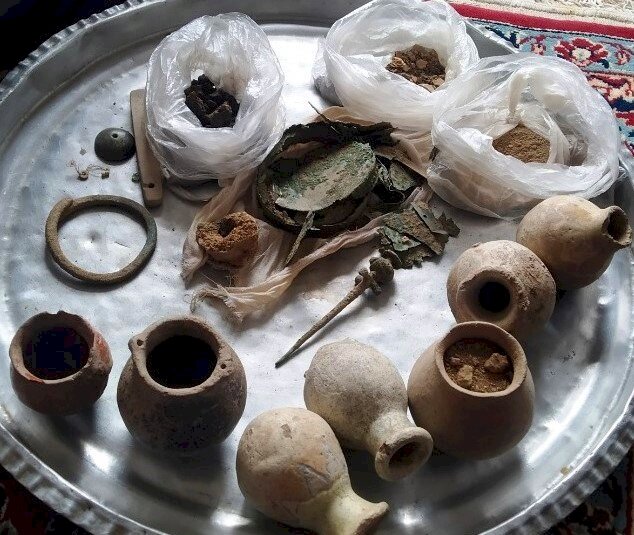Ancient relics discovered accidentally in Kordestan

TEHRAN – A total of 13 historical objects have recently been unearthed accidentally near the western Iranian village of Divandarreh while villagers were plowing agricultural land, a senior police official in charge of protecting cultural heritage said on Thursday.
The locals soon informed authorities in charge of protecting the cultural heritage and the objects were handed over to Kordestan province’s Cultural Heritage, Tourism and Handicrafts Department for further studies, Rasul Moradi announced, CHTN reported.
The objects that include some earthenware jugs and stone and metal tools are estimated to date back to the Mannaeans period (850 BC–616 BC) and the Median era (around 678 BC–around 549 BC), the official added.
According to the Encyclopedia Britannica, the Mannaeans are first recorded in the annals of the Assyrian king Shalmaneser III (reigned 858–824 BC) and are last mentioned in Urartu by Rusa II (reigned 685–645 BC) and in Assyria by Esarhaddon (reigned 680–669 BC).
Mannai, also spelled Manna, was an ancient country surrounded by three major powers of the time namely Assyria, Urartu, and Media. With the intrusion of the Scythians and the rise of the Medes in the 7th century, the Mannaeans lost their identity and were subsumed under the term Medes.
The Medes were ancient Iranian people who spoke the Median language and lived in an area known as Media in the north and west of Iran. Around the 11th century BC, they occupied the mountains of northwestern Iran and the northeastern and eastern areas of Mesopotamia located in Hamadan (Ecbatana).
It is believed that they emerged in Iran during the 8th century BC. All of western Iran and some other territories were under Median rule in the 7th century BC, but their exact geographic extent is unknown.
The name Kordestan refers to the region’s principal inhabitants. After the Turkish invasion of Iran in the 11th century CE (Seljuq period), that name was given to the region comprising the northwestern Zagros Mountains.
It was during the reign of Abbas I the Great of Iran’s Safavid dynasty (1501–1736) that the Kurds rose to prominence, having been enlisted by Abbas I to help stem the attacks of the marauding Uzbeks from the east in the early 17th century.
ABU/AFM
